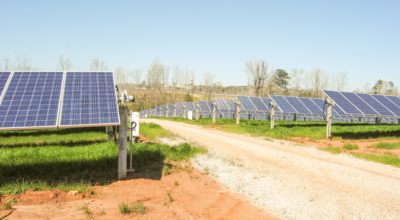Suffolk’s air grade improves
Published 10:39 pm Friday, May 1, 2015
After three straight years of getting a failing grade for air pollution from the American Lung Association, Suffolk saw a moderate improvement — to a “D” — in the organization’s most recent State of the Air Report.
The grade means that air quality monitors in the city recorded eight days in the three-year 2011-2013 time frame when the ozone levels in the city were unhealthy for sensitive groups.
“Any bad air day for someone who’s in a sensitive group, that could be one bad air day too many,” said Kevin Stewart, director of environmental health at the American Lung Association of the Mid-Atlantic.
Ozone is an invisible gas, often referred to as smog, formed when hydrocarbon vapors and nitrogen oxides have a chemical reaction in the air triggered by sunlight and heat.
Sources of hydrocarbon vapors and nitrogen oxides include vehicles, chemical plants, refineries, factories, gas stations, paint, power plants, industrial boilers, trains and ships.
Sensitive groups that are more likely to be affected by ozone pollution include those under 18 and over 65 years old and those with diabetes, cardiovascular disease or other lung impairments, like asthma and COPD.
The data was collected at two monitoring stations in Suffolk, one at the former Tidewater Community College campus on College Drive and the other at the Tidewater Agricultural Research and Extension Center’s research facility on Hare Road, in the rural southwestern part of the city.
The decision about where to place pollution monitors is made by the state Department of Environmental Quality and the U.S. Environmental Protection Agency, not by the American Lung Association.
Stewart said a variety of factors can affect air pollution.
“There are a number of variables,” he said. “I don’t want to make too much of a year-by-year change.”
Hot summers can increase the creation of ozone, while wetter, cool summers can decrease it.
In addition, Stewart said, regulations that are putting coal-burning power plants out of business and switching them to natural gas, as well as cleaner fuels and cleaner vehicles, are gradually decreasing the amount of ozone.
In the most recent report, “the 2010 data that had been in last year’s report got dropped, and the 2013 data got added,” Stewart said. “That allowed three more years for some of those changes in energy generation sources and the vehicle pool to take effect.”
The only other ozone monitoring station in Hampton Roads is in Hampton, which also received a “D” for its air quality.
Particulate pollution also was measured in some areas for the report, but no monitoring station for it exists in Suffolk. Norfolk received a “C” for its particle pollution, and Virginia Beach received an “A.”
According to the American Lung Association, folks can help improve pollution in their area by driving less, using less electricity and not burning wood or trash.
People who are at risk or have a child who is at risk can download a mobile app from the American Lung Association’s website, www.lung.org, that gives daily updates on local air quality. On a computer, people can visit www.airnow.gov.






